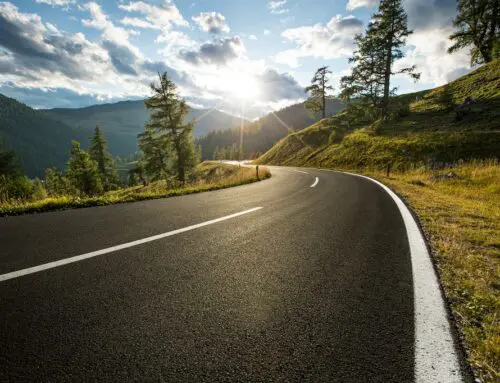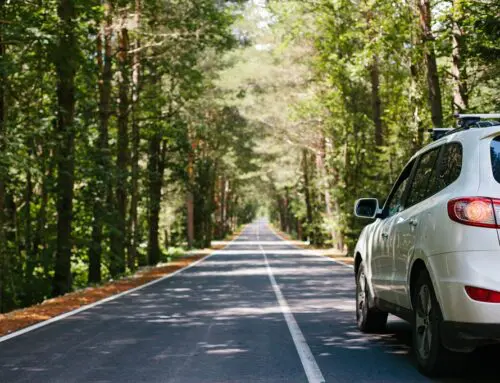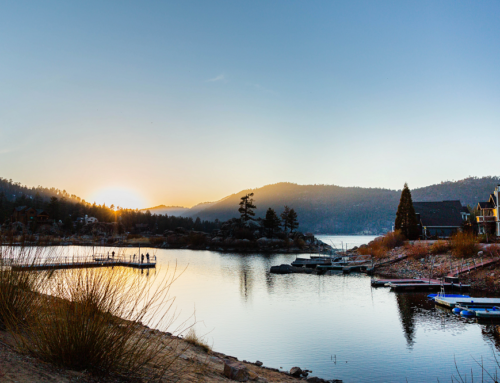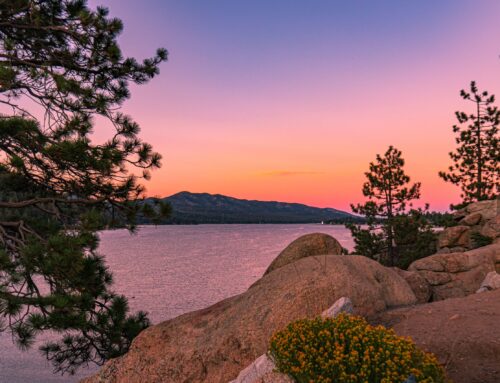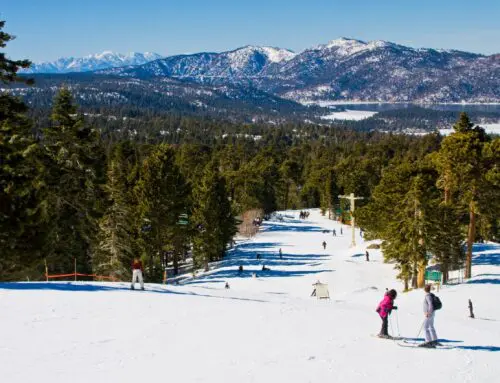“He who marvels at the beauty of the world in summer will find equal cause for wonder and admiration in winter.” – John Burroughs, American naturalist and writer
If you’re seeking a place to experience the magic of winter, look no further than the rugged wilderness of Big Bear. A true winter wonderland, Big Bear offers stunning hikes at all difficulty levels. And as a plus, you can enjoy this iconic San Bernardino mountain getaway with fewer crowds in the colder months. So read on for a guide to the best winter hikes in Big Bear!
Pine Knot Trail to Grand View Point
Pine Knot Trail to Grand View Point is one of Big Bear’s most popular hikes. This is a busy route in the summer, but as more casual hikers tend to drop off around November, the trail becomes a tranquil winter wonderland. Choosing this route means preparing for a moderately strenuous yet rewarding 6-mile hike. To begin, we recommend parking at the Aspen Glen Picnic Area, which starts the trek on a gradual ascent. Then, take the route directly to the right of the large sign. Following the switchbacks, you’ll see stunning panoramic views of Big Bear’s renowned lake.
Further along, you’ll meander through fragrant patches of Ponderosa and Jeffrey pines. After reaching 1,000 feet of elevation, you’ll wander amongst majestic sugar pines until the trail intersects with fire road 2N10. Here, you’ll turn left to reach the stunning Grand View Point, considered one of the best views of the southern range of the San Bernardinos.
Castle Rock Trail
The journey to the top of Castle Rock will have you looking out across Big Bear like the leader of your own realm. This steep 2.5-mile return hike is ideal if you’re looking for a short and sweet hike. Start your quest to Castle Rock by parking in the small pull-out lot. After carefully crossing the highway, you’ll find the trailhead. Follow the path along the stream for an easy start, which will take you uphill through a forested gully packed with Jeffrey pines and white firs. At this point, you’ll be able to choose one of many routes to the top following the scattered signs. You’ll know the summit is near when you’ve reached an elevation of 700 feet, and the trail starts to descend adjacent to another gurgling stream to your left. While it may be tempting, climbing Castle Rock can be dangerous in the winter. Instead, walk around the stone’s perimeter to the east side for some breathtaking panoramic views.
Alpine Pedal Path
If you’re looking for a route with less snow, the north shore of Big Bear Lake is an excellent choice. Not only will you experience a different view of Big Bear, but you’ll also enjoy a more peaceful hike. The 3.5-mile Alpine Pedal Path is much more accessible than other hikes in the area but will still reward you with beautiful views of the lake and surrounding areas. This route is particularly popular with bird watchers seeking bald eagles, who can be found on Big Bear Lake’s north shore between November and April. The area lacks dense patches of cedars and pines, making it one of the best places in all of Southern California to see these stunning creatures!
Preparing for Your Hike
Reaching Big Bear’s stunning vistas and snow-covered trails requires a fair amount of preparation. To get the most out of your time on the trail, follow our winter hiking tips below!
- Find a Hiking Partner – while solo hikes can be fulfilling, we always recommend hiking with a partner. Wandering off into the snow alone can put you at risk if an emergency arises. A hiking partner can support you and call for help if you experience any issues. However, if you do hike alone, be sure to let someone know about your plans, including your proposed path and hike times, so that they can help in an emergency.
- Dress for the Occasion – it’s needless to say that the winter brings colder weather and harsher elements, making it necessary to dress for the winter at Big Bear. As well as the usual essentials, such as hiking boots, you will need to wear layers that can be added and removed as your body temperature fluctuates. Also, be sure to pack extra socks and an emergency blanket (just in case). Waterproofs are also highly recommended.
- Know Your Route – we’ve highlighted some of the best hiking routes through Big Bear for the winter months above, but no matter which trail you decide to take, take some time to get familiar with it. Studying the map and reading trail guides in advance can go a long way on the trail, where conditions such as snow or rain can obscure scenery and your view. The better idea you have of which way you should be going, the less likely you are to get lost.
- Check the Weather – some routes can become dangerous when paired with poor weather. Rain, frost, and snow can make underfoot areas less stable, while harsh winds can damage trees and cause a risk of falling objects. It’s best to check the weather and plan your winter hike for a mild and stable day.
If you love the outdoors and want to experience some of the best winter hiking Southern California has to offer, Big Bear is the place for you. Sessions Retreat & Hotel can accommodate you and your loved ones before and after your time on the trail, where you can kick back and enjoy our rejuvenating amenities, like a nice warm sauna. See you on the trail!

